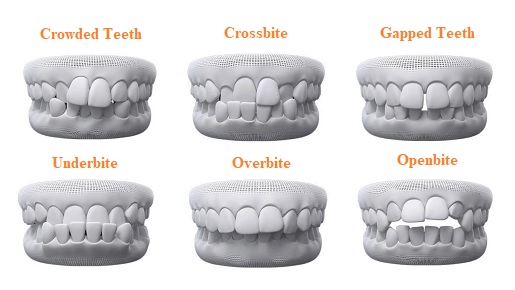Invisalign for Teenagers: A Modern Solution to Straightening Young Smiles
Invisalign vs. Conventional Braces: Which Option Is Right for You?
When considering orthodontic treatment, the choice in between Invisalign and conventional dental braces presents a number of crucial aspects that merit careful analysis. Invisalign supplies a very discreet option with removable aligners, while conventional dental braces offer an extra noticeable yet effective solution for severe misalignment.
Overview of Treatment Options

On the other hand, standard dental braces include steel brackets and cords that are adhered to the teeth. This method applies constant pressure in time to attain positioning. While reliable for intricate orthodontic issues, conventional dental braces call for regular check outs for changes and can position challenges in preserving dental health as a result of the problem of cleaning about wires and braces.
Both alternatives have their benefits, and the selection usually depends upon certain dental problems, lifestyle preferences, and client conformity. Inevitably, speaking with an orthodontic expert is critical for figuring out one of the most appropriate therapy plan customized to individual needs. Comprehending the subtleties of each choice can substantially influence the total success of orthodontic therapy.
Aesthetic Factors To Consider
A substantial element influencing the choice between Invisalign and standard dental braces is the aesthetic appeal each therapy uses. Invisalign aligners are crafted from clear plastic, making them virtually undetectable when worn.
On the other hand, traditional braces consist of metal braces and wires, which can be extra visible. While advancements in orthodontic innovation have actually resulted in the growth of smaller sized brackets and colored elastics, standard dental braces still preserve an even more obvious profile. For some people, the exposure of dental braces might discourage them from seeking needed therapy.
Ultimately, the option between Invisalign and typical dental braces might rest on personal preferences pertaining to appearances. People who focus on discretion usually lean towards Invisalign, while those that are much less concerned concerning visibility might select traditional dental braces. Comprehending the aesthetic effects of each choice is essential for making a notified decision that aligns with one's way of living and choices.
Convenience and Convenience

In terms of ease, Invisalign aligners are removable, allowing clients to appreciate their preferred foods without limitation and preserve ideal dental hygiene. Brushing and flossing are streamlined, as the aligners can be gotten throughout these regimens, whereas typical braces require careful maneuvering around brackets and wires.
In comparison, conventional braces necessitate normal adjustments, making them much less practical for those with hectic schedules. Overall, the convenience and convenience of Invisalign make it an attractive choice for several individuals seeking orthodontic treatment.
Therapy Duration and Efficiency
While both Invisalign and traditional dental braces are reliable in dealing with oral misalignments, the period of therapy can differ significantly between the 2 options. Usually, Invisalign therapy can take anywhere from 12 to 18 months, depending upon the intricacy of the situation. The clear aligners work by slowly changing teeth right into their preferred positions, and routine follow-ups with an orthodontist help ensure progression stays on track.
On the other hand, conventional dental braces usually need a longer dedication, usually ranging from 18 months to three years. This is because of their fixed nature and using cords and brackets, which can be extra reliable for complicated instances and serious imbalances (Invisalign). The therapy performance of typical braces is well-documented, as they permit specific adjustments and greater control get more over tooth movement
Ultimately, the selection between Invisalign and standard dental braces may rest on both the anticipated therapy period and the details oral issues handy. Consulting with an orthodontist is important, as they can offer tailored referrals based upon specific demands, making certain the selected method aligns with desired durations and end results.
Expense Contrast and Insurance Coverage Alternatives
Cost plays a considerable duty in the decision-making procedure for individuals taking into consideration orthodontic therapy, whether deciding for Invisalign or conventional braces. On average, the price of Invisalign ranges from $3,000 to $8,000, while traditional braces generally cost in between $2,000 and $6,000. Elements affecting these expenses include the intricacy of the instance, the period of therapy, and geographical place.
Several dental insurance strategies provide partial coverage for orthodontic therapies, however the specifics can vary commonly. Generally, standard braces might be more often anonymous covered by insurance plans contrasted to Invisalign, which some insurance firms classify as an aesthetic procedure.
In addition, a number of orthodontic practices provide flexible payment plans, making both treatment choices a lot more accessible. Clients ought to ask regarding prospective financing choices and discount rates for in advance repayments. Reviewing the complete price, consisting of insurance policy benefits and repayment plans, is necessary for making an educated decision that aligns with both aesthetic choices and spending plan factors to consider.

Verdict
In recap, the option between Invisalign and traditional dental braces pivots on several elements, including aesthetic preferences, comfort, treatment period, and price. Invisalign uses a very discreet, removable option that helps with oral hygiene and dietary adaptability, while standard dental braces might be much more suitable for complex oral concerns and typically come at a reduced rate point. Eventually, consultation with an orthodontist is vital to assess private conditions and figure out one of the most suitable treatment alternative for achieving ideal oral alignment.
When thinking about orthodontic therapy, the selection between Invisalign and standard dental braces offers numerous important elements that merit cautious analysis.Comparing Invisalign and conventional braces exposes unique therapy alternatives for orthodontic correction.While both Invisalign and traditional braces are effective in fixing dental misalignments, the duration of treatment his response can vary dramatically in between the 2 options.Expense plays a considerable function in the decision-making procedure for individuals thinking about orthodontic therapy, whether choosing for Invisalign or standard dental braces.In recap, the option between Invisalign and conventional braces hinges on multiple factors, including visual choices, convenience, treatment duration, and cost.